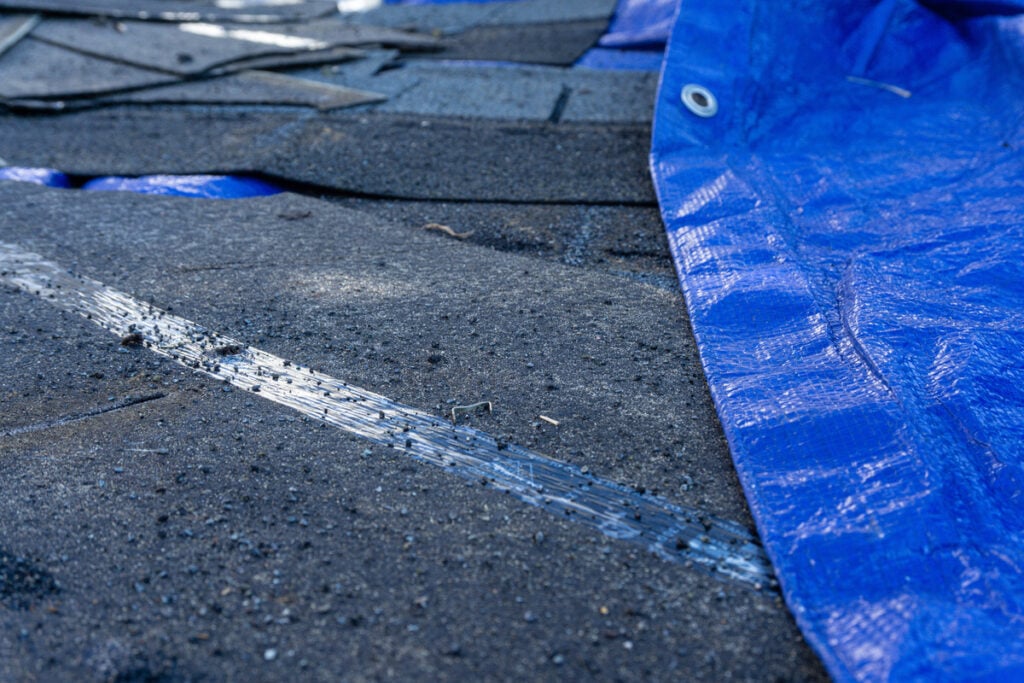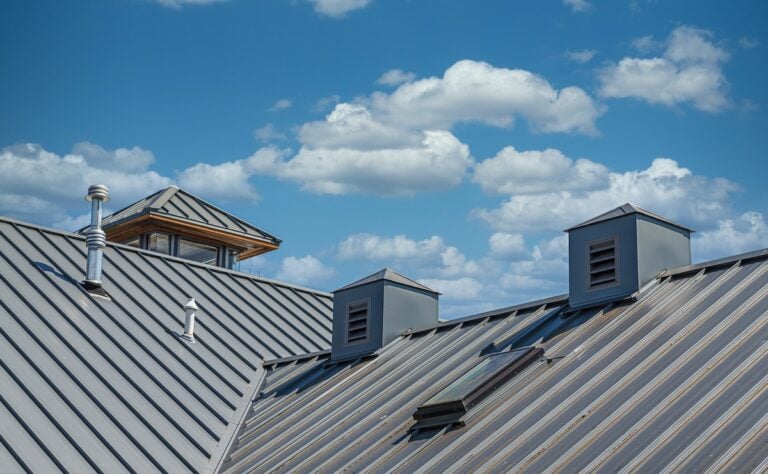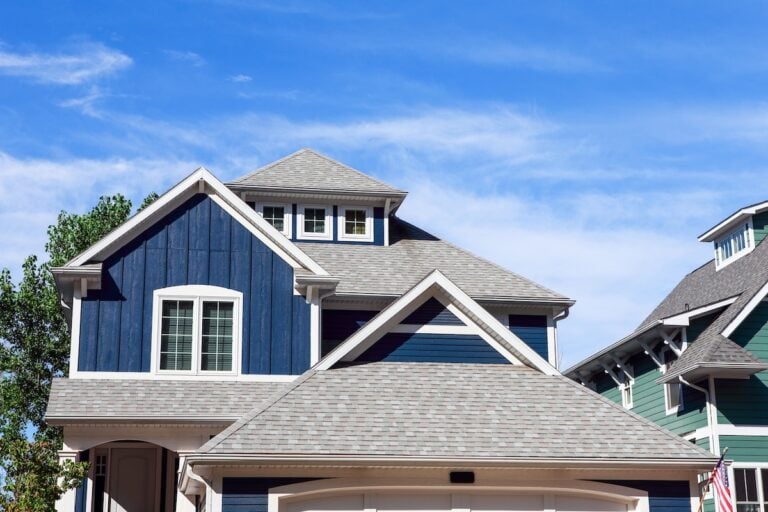Flat roofs are a popular choice for many homes and commercial buildings due to their modern aesthetic and efficient use of space. However, they are also more prone to leaks compared to sloped roofs. Tarping a flat roof can be an effective temporary solution to protect your property from water damage until permanent repairs can be made. In this comprehensive guide, we will walk you through the entire process of how to tarp a flat roof, including:
- Why tarp a flat roof?
- How to know if your roof needs tarping
- Assessing potential damages
- Materials needed for tarping
- Step-by-Step Guide
- Safety precautions
- Longevity of a tarped roof
- Cost of tarping a roof
- Where to buy tarping materials
- FAQs
Why Tarp a Flat Roof?

Tarping provides a quick and temporary solution to protect your interior spaces from water ingress, especially after severe storms or hail damage roof repairs, buying you time to schedule permanent fixes safely. Flat roofs, while efficient and stylish, can be susceptible to water pooling and leaks. Tarping provides a quick and temporary solution to:
- Prevent further water damage: Protect your interior spaces from water ingress.
- Extend the life of your roof: Temporary protection can prevent immediate deterioration.
- Allow for safe inspection and repair: Gives you time to plan and execute permanent repairs.
How to Know If Your Roof Needs Tarping
Identifying the need for tarping involves looking for specific signs of damage:
- Visible Leaks: Water stains on ceilings or walls.
- Pooling Water: Water accumulating in low spots on the roof.
- Damage to Roof Membrane: Cracks, punctures, or blisters on the roof surface.
- Damp Insulation: Moisture in the attic or insulation.
- Mold and Mildew: Growth inside the home, indicating moisture issues.
Assessing Potential Damages
Before tarping, assess the extent of the damage:
- Inspect the Roof Surface: Look for visible signs of roof damage or wear.
- Check the Interior: Look for water damage on ceilings and walls.
- Evaluate Structural Integrity: Ensure the roof can support additional weight from the tarp and any accumulated water.
Materials Needed for Tarping
Gather the necessary materials:
- Heavy-duty tarp: Waterproof and UV-resistant.
- Sandbags or weights: To secure the tarp edges.
- Rope or bungee cords: For additional securing.
- Ladder: For safe access to the roof.
- Work gloves and boots: For safety.
- Duct tape: To seal edges if needed.
- Nails or screws (optional): For additional securing if allowed.
Step-by-Step Guide to Tarping a Flat Roof in 7 Steps

Follow these steps to effectively tarp your roof:
⛅️ 1. Preparation:
Ensure you have all materials ready. Check the weather forecast to avoid working in adverse conditions. If the damage is extensive, consider calling our trusted roofing contractors in Edmond for a professional assessment.
👷 2. Safety Equipment:
Wear appropriate safety gear, including gloves and boots. Ensure the ladder is stable and placed on even ground.
🧹 3. Clear the Roof:
Remove debris, standing water, and loose material from the roof surface.
🏠 4. Position the Tarp:
Lay the tarp over the damaged area, ensuring it extends beyond the damaged section by at least 3 feet on all sides.
🪨 5. Secure the Edges:
Use sandbags or weights to secure the edges of the tarp. Place them evenly around the perimeter to prevent the tarp from shifting. You can also enhance protection with proper roof edge trim installation to reduce long-term wear.
🪢 6. Additional Securing:
Use ropes or bungee cords to further secure the tarp. Tie them to fixed points on the roof or the building structure.
✅ 7. Check and Adjust:
Ensure the tarp is taut and covers all damaged areas. Adjust as necessary to prevent water pooling on the tarp.
Safety First
Safety equipment and practices are paramount when working on a roof:
- Avoid working in bad weather: Wind, rain, or snow can make the roof slippery and hazardous.
- Use a stable ladder: Ensure it is on even ground and secured.
- Wear appropriate gear: Gloves, boots, and a harness if necessary.
- Do not work alone: Have someone assist you for added safety.
For extensive damage following a storm, reach out to our storm damage repair in Moore specialists for immediate assistance.
Longevity of a Tarped Roof
A tarped roof is a temporary solution. The lifespan of a tarped roof depends on the quality of the tarp and weather conditions:
- High-quality tarps: Can last several months to a year.
- Exposure to harsh weather: Can shorten the lifespan significantly.
- Regular inspections: Check the tarp regularly and adjust or replace it as needed.
Cost of Tarping a Roof
The cost of tarping a roof varies based on the materials and the size of the area:
- Tarp: $30 – $200 depending on size and quality.
- Sandbags/weights: $20 – $50.
- Rope/bungee cords: $10 – $30.
- Labor (if hired): $100 – $300.
Where to Buy Tarping Materials
You can purchase tarping materials from:
- Home improvement stores: Home Depot, Lowe’s, etc.
- Online retailers: Amazon, eBay.
- Specialty roofing suppliers: Local roofing supply stores.
FAQs
When it comes to tarping a flat roof, several common questions arise. Below, we address frequently asked questions to help you understand the process, maintenance, and best practices for effectively protecting your roof from leaks and damage.
Q: How long can roof tarp offer protection? A: A high-quality roof tarp can protect a roof from further damage for several months to a year, but regular inspections and adjustments are necessary.
Q: Can I tarp my roof in any weather? A: It’s best to avoid tarping in adverse weather conditions like rain, snow, or high winds to ensure safety and effectiveness.
Q: Do I need professional help to tarp my roof? A: While tarping can be a DIY project, hiring professional commercial roofing contractors ensures safety and proper installation, especially for larger roofs.
Q: How do I maintain roof tarp? A: Regularly check the tarp for damage, ensure it remains taut, and replace or adjust it as necessary.
Q: What if the tarp causes water pooling? A: Ensure the roof tarp is properly secured and taut. Adjust the weights or securing methods to prevent water pooling.
Palladium Roofing: Your Storm Damage Professionals
Tarping a roof is an effective temporary solution to protect your property from leaks and water damage. By following the steps outlined in this guide, you can ensure a secure and safe installation, giving you time to plan and execute permanent repairs. Always prioritize safety and consider professional help if needed. Our commercial roofing in Norman team is always ready to assist with emergency tarping, repairs, or long-term roofing solutions tailored to your property’s needs.
Call our team at Palladium Roofing for regular maintenance and inspections to help extend the lifespan of your tarped roof and protect your home or building from further damage.





